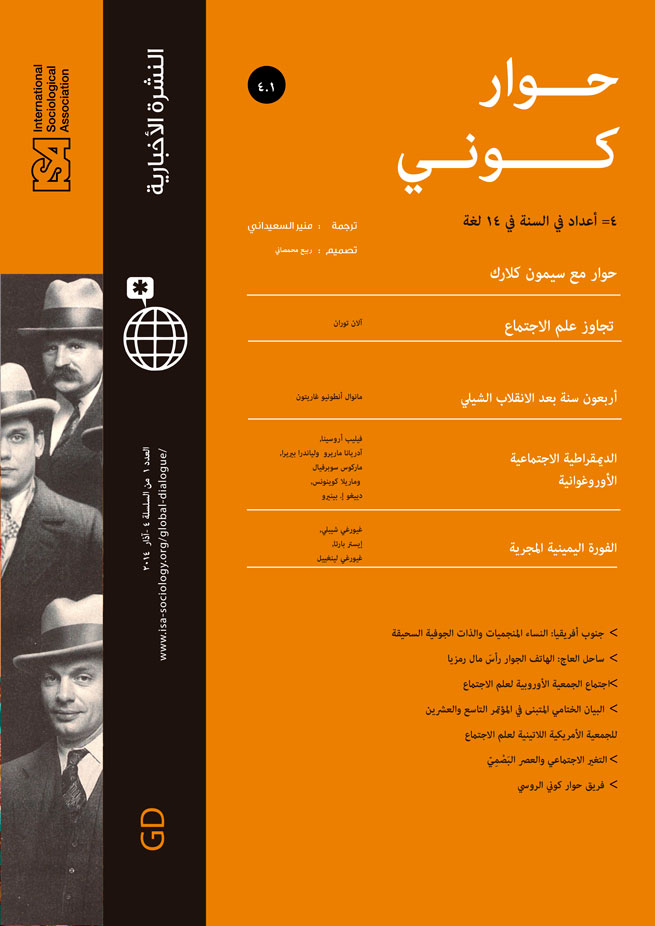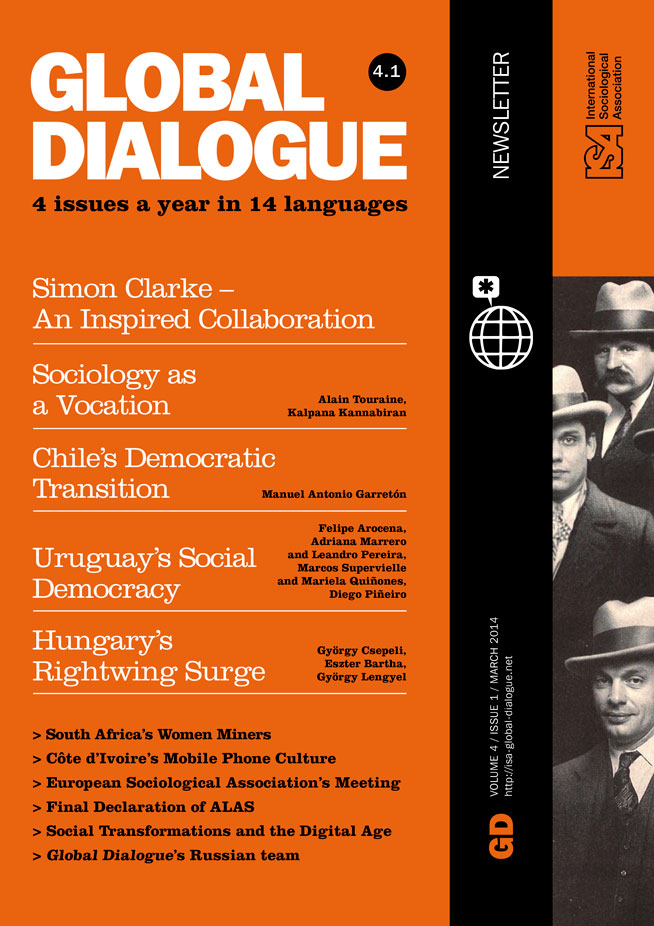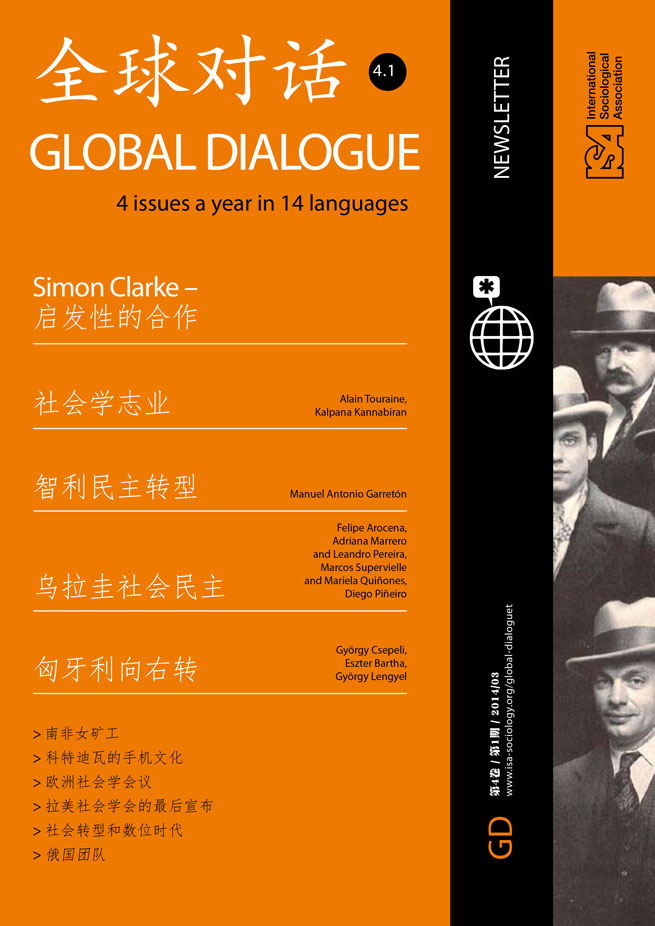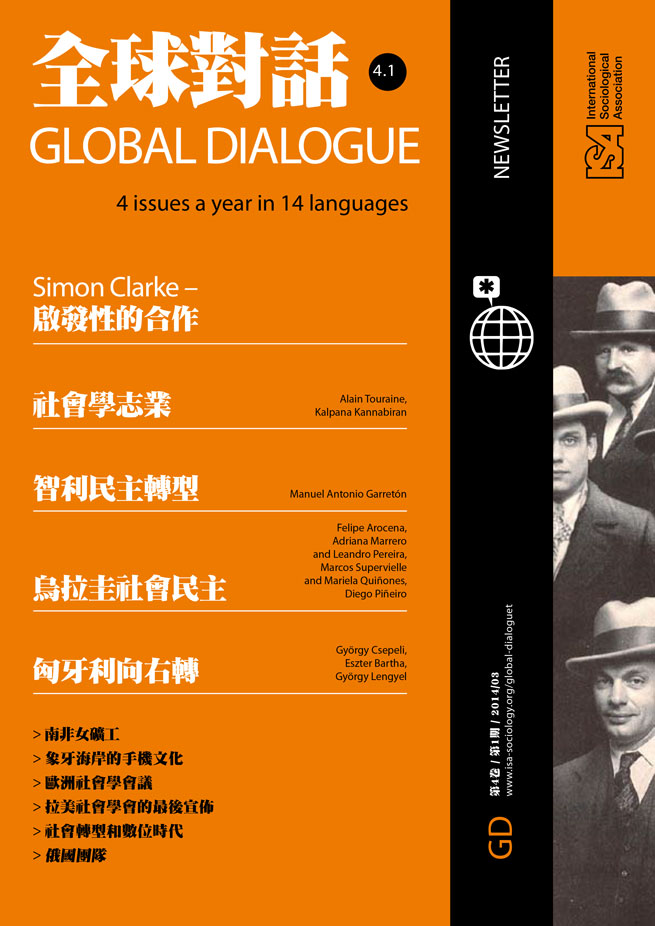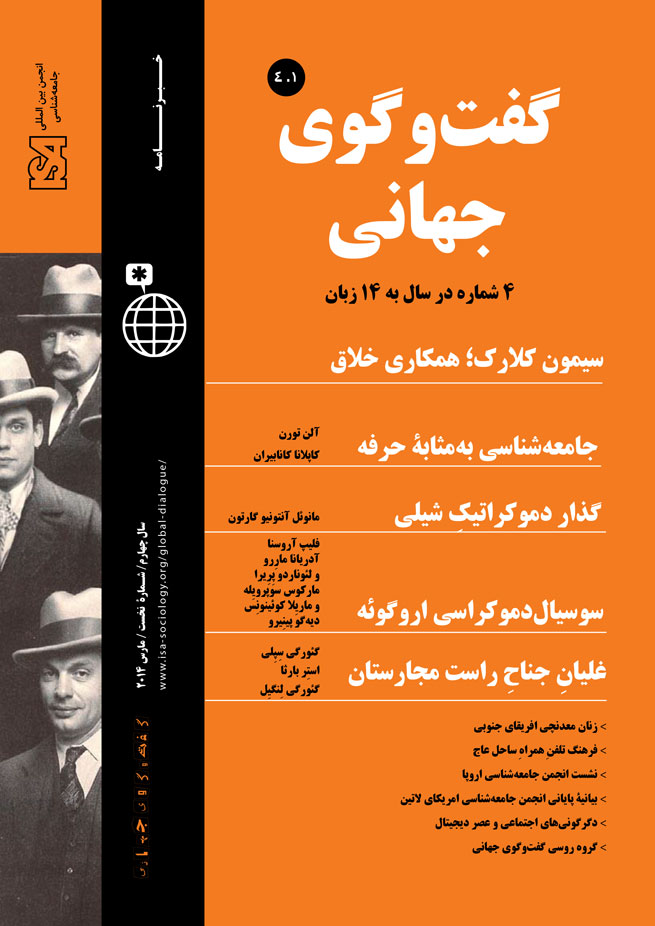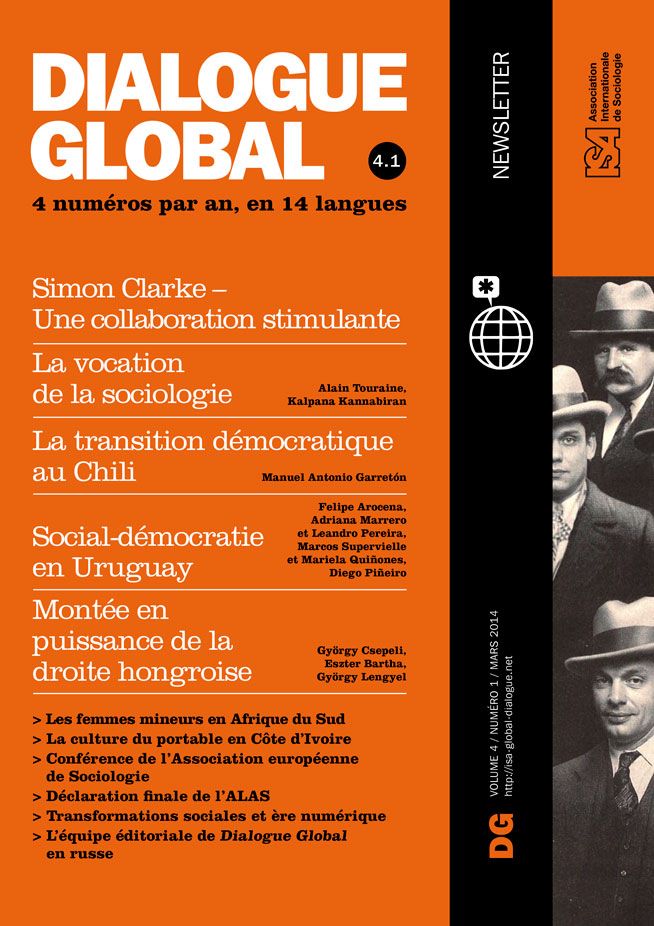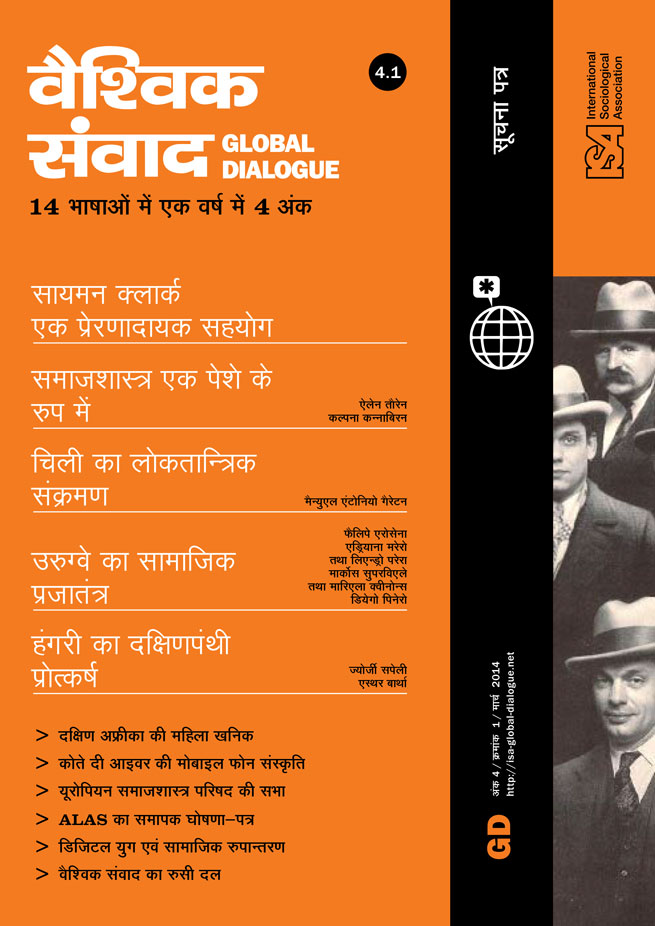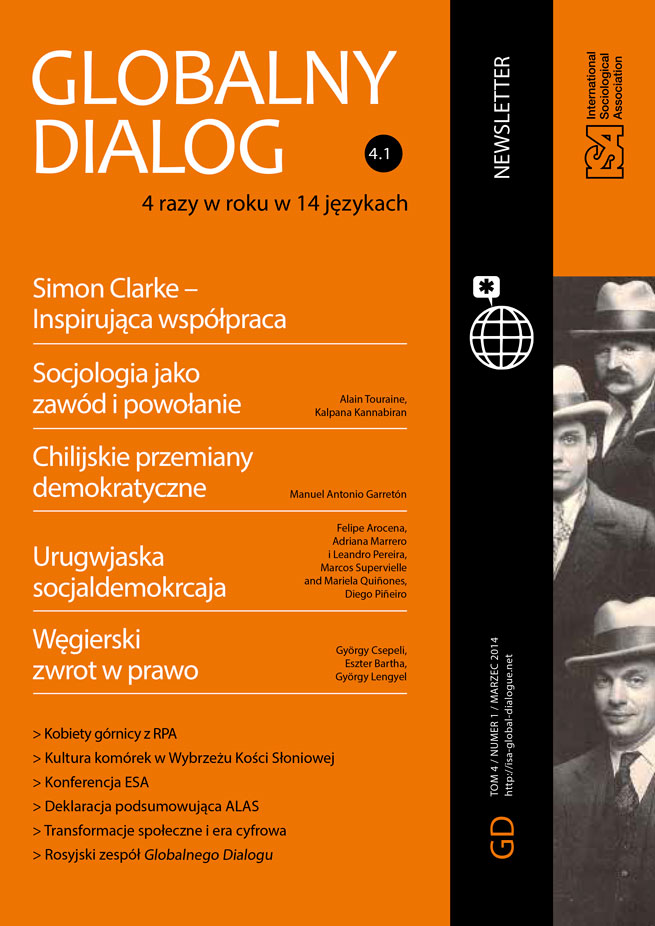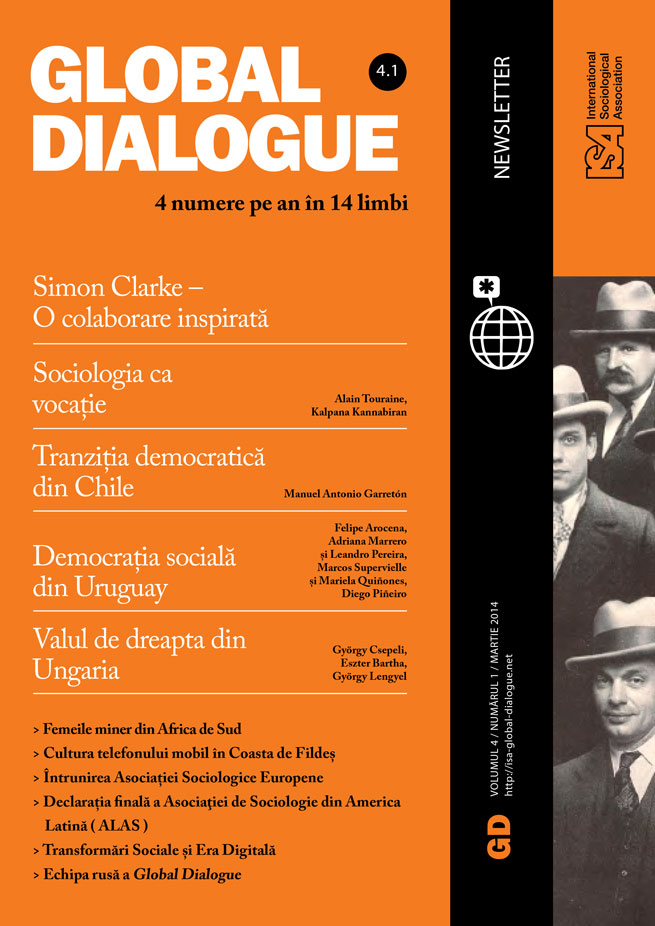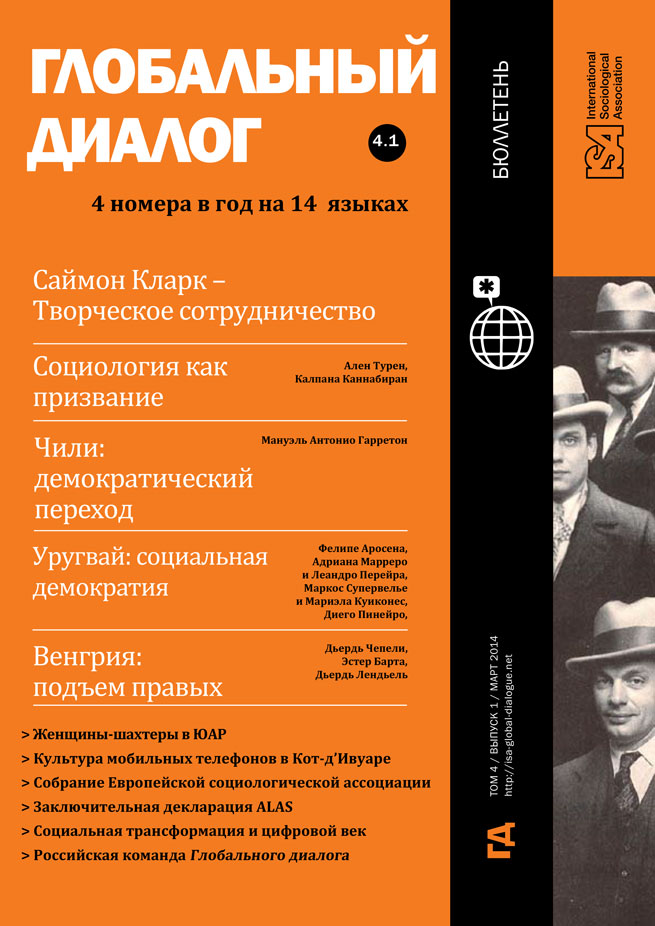An Inspired Collaboration with Russian Sociologists: An Interview with Simon Clarke
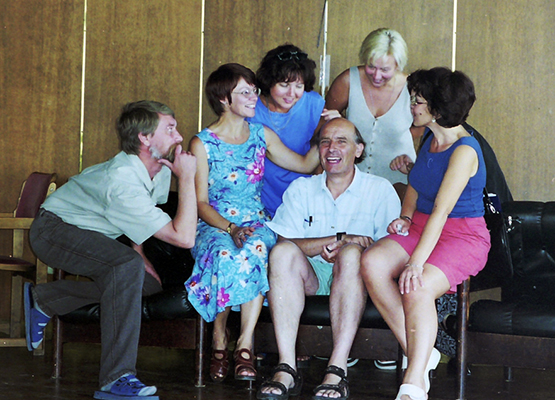
February 10, 2014
During the 1980s Simon Clarke, a British sociologist at Warwick University, was best known for his contributions to theory – in particular, his original interpretation of Marx, and his critique of the liberal foundations of modern sociology and economics. In 1990, Clarke took a fateful journey to the Soviet Union, inaugurating two decades of research through a rare international collaboration. He became the prime mover behind a new school of Russian sociology that examined a society in the throes of transformation. Along with his colleague Peter Fairbrother, he brought together a network of Russian researchers in the Institute of Comparative Labour Relations Research (ISITO). Here Clarke and his Russian colleagues produced a corpus of work that meticulously analyzed the impact of economic reform on workplaces and households, and the response of workers and their organizations. This research was unique in its scale, insight, and originality, offering an insistent challenge to the dominant neoliberal orthodoxy. The ethos of ISITO was equally noteworthy. If hierarchy and subordination were key attributes of Soviet organizations, in ISITO, Simon Clarke managed to foster a collaborative ethos, underpinned by trust, friendship, and a spirit of mutual learning. Here he is interviewed by two of his former students, Sarah Ashwin who teaches at the London School of Economics and Valery Yakubovich who teaches at ESSEC Business School, France.
Valery: From the late 1980s many Western sociologists went to the Soviet Union to observe a “natural experiment” in social change. But few, if any, created a new research institution. How did you come up with this idea?
SC: Annie Phizacklea and I took a group of Warwick University students to Russia in March 1990. I was immediately excited by the sense of a myriad of new possibilities that seemed to be opening up. By chance we met Svetlana Natalushko, who had taken over running the “Advanced Sociology Courses,” which had been founded by Galina Mikhalyova at the Higher Komsomol School (that had been renamed the Institute of Youth), to provide courses for young sociologists from Russia’s regions. In the absence of democratic elections, public opinion surveys had become an important instrument for the alternative social organizations which had formed under perestroika (and for Party and trade union organizations trying to retain power), so many activists aspired to develop their sociological knowledge and came to Moscow to study sociology in a relatively progressive environment. I was invited back to give a week of lectures in December and among the students were Vadim Borisov and Olga Rodina, who were to become a mainstay of ISITO. The following March Peter Fairbrother and I again took a party of students and met more young sociologists, including you Valery Yakubovich, Vladimir (“Volodya”) Ilyin, and Petr Bizyukov, and had some fascinating site visits and meetings with alternative labor movement activists.
At that time, as you say, many western sociologists were beginning research in the Soviet Union, but most were content to subcontract their fieldwork to Soviet research institutes, survey organizations, or graduate students, which could produce plenty of cheap quantitative data (qualitative research was regarded as unscientific in the Soviet Union) and reports recycling their old research. We were not interested in analyzing second-hand data of dubious reliability, but wanted to carry out our own research. The obvious barriers were time and language, but Vadim, Volodya, and Olga were able to serve as our interpreters and collaborators in interviews, and we already had a core of interested researchers who could conduct ethnographic case studies. We spent four trips over the following year traveling around Russia with Vadim and Volodya to carry out pilot studies, interview labor movement activists, and look for potential collaborators. We explained to those we met that we were interested in conducting collaborative ethnographic research, but that there was no funding. This was enough to sort out those who had a purely financial interest in collaborative research from those who positively wanted to participate in the project for its own sake. Eventually, we established research teams in Moscow, Syktyvkar, Samara, and Kemerovo, with such outstanding leaders as Vadim Borisov, Vladimir Ilyin, Irina Kozina, Petr Bizyukov, and Veronika Kabalina.
We later formed research teams in Perm, Yekaterinburg, St Petersburg, Ulyanovsk, and Ivanovo. The whole program was held together by the friendship and commitment of the teams and team leaders, without any institutional framework, but we had always insisted to our collaborators that the space that had been opened up for informal organization by the disintegration of the USSR and its institutions would not persist and that they needed to get an institutional foothold in their regions, while we needed an institutional identity for our collaboration. Eventually, after many bureaucratic pitfalls, we established the Institute for Comparative Labour Relations Research (ISITO) as a non-profit social organization, with the paraphernalia of bank accounts, management committee, director, bookkeeper, and subordination to the tax authorities. Nevertheless, in practice ISITO continued to operate as an informal network based on friendship, collaboration, and commitment to research.
Sarah: As you say, qualitative research was regarded as unscientific in the Soviet Union. So did ISITO team members have experience of ethnography, or did you need to train them?
Valery: As I remember, despite its “unscientific” reputation, qualitative research was enthusiastically received in Russia in the early 1990s. What insights do you think you’d have missed without a qualitative approach?
SC: When we first established our research program we discussed it with many sociologists in Moscow. They insisted that there were no sociologists in Russia’s regions, only “field researchers.” Sociology was divided between social philosophers and social researchers. The social philosophers, who considered themselves to be the only true sociologists, had made a seamless transition from Marxist-Leninist to Western social philosophy, but had no interest in evaluating the empirical validity of either. Social researchers insisted that, while qualitative methods (“soft” methods) might have some heuristic value, only quantitative methods (“hard” methods) were truly scientific. Nevertheless, the younger sociologists we met, especially those from Russia’s regions, showed real interest in qualitative methods. This was partly a matter of resources, because there was little money for quantitative research outside the Moscow Institutes, whereas anybody could do qualitative research, provided that they had time. But it was also because they were disillusioned with the Soviet fetishism and politicization of quantitative research. Nobody believed the quantitative data published by state agencies to support the government political line. Qualitative research, observing and talking to people, revealed levels of reality that had never been reported by Soviet publications so it was exciting for younger, critical sociologists.
When we started our first project we held a three-day seminar on qualitative methods in a dom otdykha (vacation home) of the Radio Ministry outside Moscow, where we slept in freezing log cabins. Our key message to our collaborators was that qualitative research had to be rigorous and systematic. Peter Fairbrother led a memorable discussion of the technical aspects of qualitative research – the importance of having adequate and sufficient recording instruments, of writing up field notes immediately after an interview or observation, the technical and ethical aspects of recording interviews and so on. Everybody was enthusiastic, quickly grasping the essential principles of qualitative research.
Most of our research was based on comparative case studies, particularly of industrial enterprises. Each research team was responsible for conducting a certain number of case studies according to an agreed schedule. We held initial seminars, involving all the researchers, at which we decided who would be interviewed, for example key senior managers, shop chiefs, foremen, and a sample of ordinary workers from one main and one auxiliary shop, and what forms of observation would be undertaken, for example sitting in the office of a shop chief or trade union president or shadowing a foreman. We then drew up interview guides for each informant category and prepared a template for the report to be written up for each enterprise. In this way we ensured, as best we could, that all of the case studies were conducted on a comparable basis. Each case study report, with its associated interview transcripts and field notes, was circulated to all the research teams and discussed by them in their team meetings. Every three months we held meetings with the team leaders to review progress and every year we had a research seminar with all the participants to formulate and evaluate hypotheses against the case study reports. For the final seminar of each project everybody was expected to present an analytical paper drawing on all the case study reports and these became the basis of project publications in Russian and English.
I doubt that we would have got any insights at all without a qualitative approach. People individually knew what happened in Soviet and Russian institutions and organizations, but this knowledge was nowhere systematically collated and codified. Without qualitative research we have no idea what questions to ask in a survey and no idea of how to interpret the answers; quantitative research can only ever come at the final stage of a project, when we seek a basis on which to generalize conclusions drawn from qualitative studies. We were not opposed to quantitative methods, but we were suspicious of the available Russian quantitative data, especially as many of our collaborators had worked as interviewers and knew the tricks that interviewers pulled. We also found major inconsistencies in the data that we sought to use in our own research, including that from the most respected surveys.
Our dissatisfaction with existing data sources led us to seek funding for our own labor market survey in our four core regions in 1998, directed by you Valery Yakubovich, with rigorous sampling, monitoring of interviewers, and testing the consistency of our data.
Sarah: Together with ISITO, you were extraordinarily productive, publishing eighteen books and 55 refereed articles in English, as well as countless publications in Russian. Which of your findings excited you most?
SC: Initially we were looking to the new workers’ movement to provide leadership during transition, and throughout our research we have sought to support the development of a democratic and effective trade union and labor movement in Russia. I think that most of our findings have been depressing rather than exciting. After the initial excitement following the collapse of the USSR, when anything seemed possible, we had to confront our naiveté as neoliberalism swept all before it and resistance to the “reforms” that destroyed people’s lives and hopes was rarely more than symbolic, with no effective leadership from the traditional trade unions, while the “alternative” unions sank into a swamp of corruption. Of course there were individuals and small groups who resisted, but most were quickly undermined by repression and/or indifference.
Most of our research rigorously substantiated what we already suspected on the basis of past experience and observation, but there were some surprises. In one of our first projects we asked what motivated Russian workers. Sergei Alasheev proposed his hypothesis that “Russian workers love to work” to much initial laughter, but the paper he produced (published in Management and Industry in Russia: Formal and Informal Relations in the Period of Transition, 1995) was a brilliant exposition of his argument.
From a scientific point of view I guess the most interesting finding has been the extent to which Soviet culture, mentality, and practices have been reproduced, for better or worse, in a whole range of institutions. In our research we saw this most particularly in trade unions, and industrial management and shop-floor culture, but the phenomenon can also be observed clearly in the reconstitution of traditional state structures.
Some of the most striking findings came out of the 1998 household survey, which gave us high-quality quantitative data on which to test various hypotheses. One of these, suggested by Lena Varshavskaya of Kemerovo, was that domestic agriculture was not a lifeline for the poor as many commentators claimed, because the costs of domestic agriculture in time and money far outweighed the returns in agricultural produce. Rather, in line with the continuity argument, it was a leisure activity of the better off that exemplified the Soviet work ethic, idealization of nature, and traditions of exchange.
Another key finding concerned the dominance of institutional over market determinants of wage differentiation, strongly supportive of the traditional, though largely forgotten, argument of industrial relations specialists against labor economists and, in a similar vein, of the inability of labor economics to explain the domestic division of paid and unpaid labor. For me, as a one-time economist, these are among our most satisfying findings because I think that the principal responsibility of the social sciences today is to challenge and undermine the scientific pretensions of neoclassical economics, to show it up as the vacuous and pernicious ideology that it is.
Valery: What is the situation of ISITO now?
SC: ISITO as an institution is going through the process of liquidation, primarily because the administrative and financial procedures demanded by the Russian state are so costly in time and money, but the informal connections remain. In some ways, ISITO is a victim of its own success. Its members became highly sought-after candidates for top research and teaching positions at Russian universities. The majority have secured academic positions within which they can continue their work. We will have the final ISITO seminar in March (2014), probably in Egypt, to which all our friends and comrades will be invited. ISITO publications can be found at www.warwick.ac.uk/russia.

